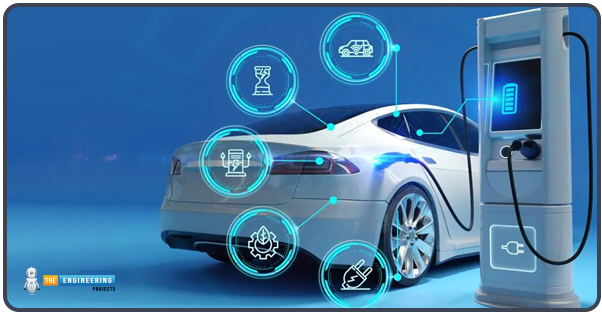
Hey readers! I hope you are doing good and learning something. Have you ever thought about electric vehicles, which are rechargeable and run on a battery? Now, it is possible, and today, we will discuss electric vehicles.
All over the globe, EVs have made a major difference by being a cleaner and cheaper way to travel than gasoline and diesel cars. Unlike cars with engines, electric cars are environmentally friendly because their engines use rechargeable batteries and give out no emissions. The rise in buyers and producers of EVs is thanks in part to new kinds of batteries, better motors, and certain actions taken by the government.
Because of their various operating systems, Battery Electric Vehicles (BEVs), Plug-in Hybrid Electric Vehicles (PHEVs), Hybrid Electric Vehicles (HEVs), and Fuel Cell Electric Vehicles (FCEVs) are each designed for different situations. All kinds of EVs offer several main benefits: they are better for the world, use less energy, perform well, and cost less to run.
But difficulties such as shorter driving ranges, fewer places to charge, batteries losing their power, and cars costing more upfront keep many people from using EVs. Even then, progress in EVs is being pushed forward by innovations in batteries, using wireless chargers, and technology for cars and the grid. On the road to sustainability, EVs will show the way and help cut down on pollution worldwide.

Here, you will learn about electric vehicles, their main components, working, types, charging structure, advantages, and future. Let’s start.
What is an Electric Vehicle (EV)?
Electricity, not gas or diesel, is what an EV needs to work. Its motor operates on rechargeable batteries, and those batteries get recharged whenever the toy is connected to an electric power source. No emissions at the tailpipe means EVs are green and save energy.
Some EVs are named Battery Electric Vehicles (BEVs), some are called Plug-In Hybrid Electric Vehicles (PHEVs), and there are a few called Fuel Cell Electric Vehicles (FCEVs). Many methods exist, but all technology is about lowering the use of fossil fuels.
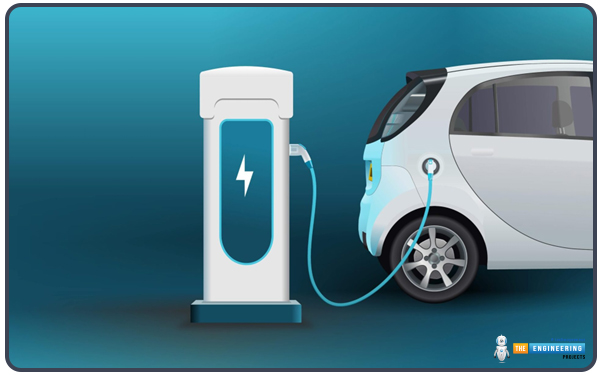
The reduced expense to run EVs, as well as how quiet they are and how little maintenance they require, are bright reasons many choose them for future journeys.
The History of Electric Vehicles:
Electric vehicles are not a 21st-century invention; they have existed since the early 19th century. Here’s a short chronology:
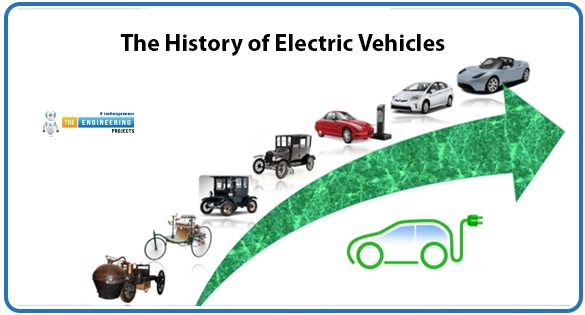
1828 -1835: Inventors such as Ányos Jedlik and Thomas Davenport developed the first crude electric motors and electric vehicles with non-rechargeable batteries.
1870s -1880s: Advances in technology (for example, lead acid batteries developed by Gaston Planté) made electric vehicles somewhat practical.
1890s -1900s: Mentioned above, electric vehicles gained popularity (in the U.S.) because they were quieter and cleaner than steam and gasoline-powered cars, and by 1900, it was estimated that 28% of vehicles in the U.S. were electric.
1920s: Ford's mass production of gasoline-powered vehicles, better roads, and the refusal to stop using electric vehicles forced electric vehicles into oblivion.
Late 20th Century: Increasing oil prices and awareness of environmental issues saw a renewed interest in electric vehicles. The GM EV1 (1996) was a landmark, however, it was recalled.
2000-Present: Tesla Motors has completely disrupted the electric vehicle market by focusing on performance, design, and battery range, and today, nearly all major automobile manufacturers are heavily investing in electric vehicle technology.
How Electric Vehicles Work:
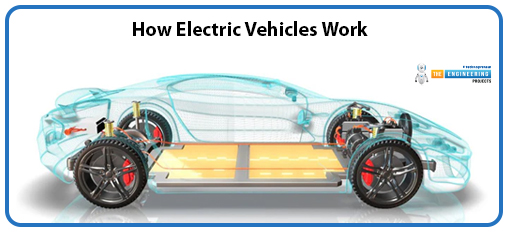
The electric vehicle (EV) derives its propulsion from electric batteries instead of gasoline or diesel, which is the primary difference from a traditional internal combustion engine (ICE) vehicle. What we refer to as an electric vehicle is the electric powertrain/s, which is a rechargeable battery and delivers clean and efficient transportation without fossil fuels.
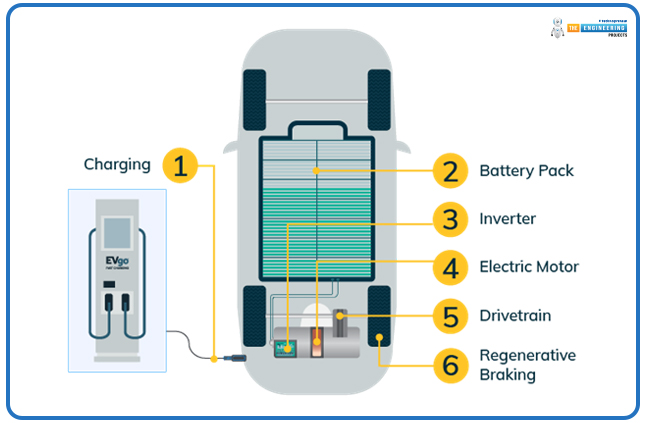
Power Source:
The battery pack is the core of the energy system of an EV, which is constructed mainly out of lithium-ion cells. The worth of the battery pack is that it stores electrical energy for its drive system and delivers power to the electric motor. Batteries, pack capacities may vary by vehicle battery size according to the manufacturer, but larger battery packs mean longer driving range. You can attach EVs to outside electricity sources, such as at your home or public EV charging spots. It depends on the charger: you can be charged in under an hour with a DC charger, but a Level 2 charger can take hours.
Powertrain:
EVs need to convert the direct current (DC) electrical energy in the battery pack with an inverter first to alternating current (AC). AC electrical energy is currently used to drive the electric motor to generate torque to move the vehicle in a given direction. EVs commonly use a single-speed gear reduction transmission, which is less complex than traditional ICE vehicles ' multi-speed transmission; hence, a mechanical system is simplified, and maintenance needs are also reduced. The takeoff and acceleration in EVs are smooth with instantaneous torque.
Regenerative Braking:
A unique part of electric vehicles is that they can slow down using regenerative braking. If you push the brake or let off the gas, the system will make you slow down more quickly. After that, the electric motor turns in reverse and assists in producing energy. In the old way, braking lost the vehicle’s energy as heat. With regenerative braking, the energy is turned into electricity and is fed back to the battery. As a result, less energy is needed, and the vehicle has a greater range.
Types of Electric Vehicles:
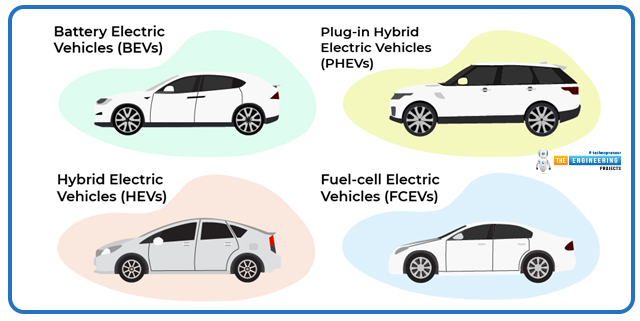
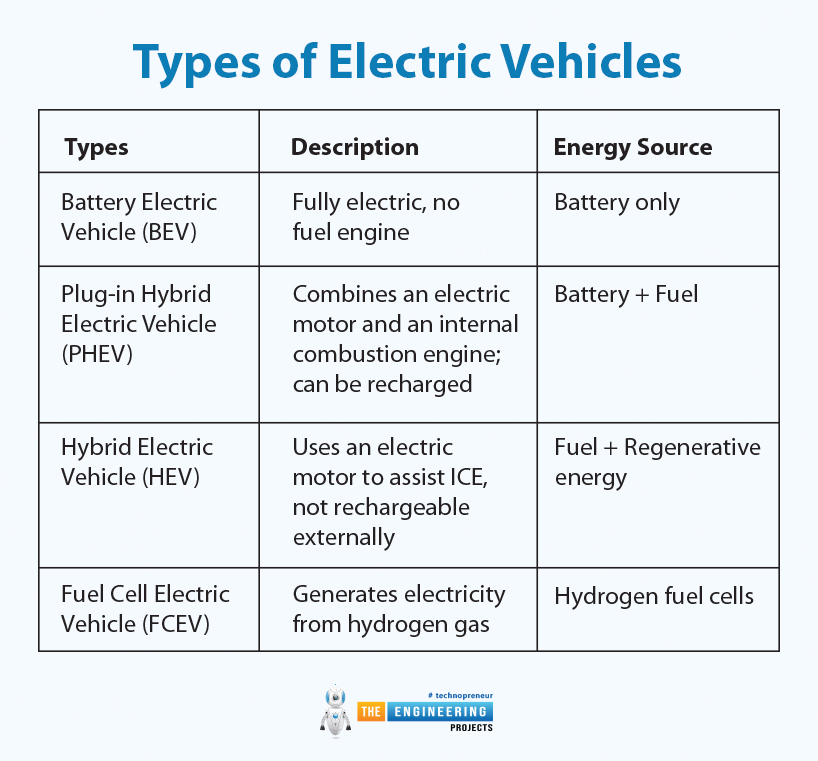
Types |
Description |
Energy Source |
Battery Electric Vehicle (BEV) |
Fully electric, no fuel engine |
Battery only |
Plug-in Hybrid Electric Vehicle (PHEV) |
Combines an electric motor and an internal combustion engine; can be recharged |
Battery + Fuel |
Hybrid Electric Vehicle (HEV) |
Uses an electric motor to assist ICE, not rechargeable externally |
Fuel + Regenerative energy |
Fuel Cell Electric Vehicle (FCEV) |
Generates electricity from hydrogen gas |
Hydrogen fuel cells |
Components of Electric Vehicles:
The organization and construction of Electric Vehicles (EVs) differ greatly from that of traditional vehicles with Internal Combustion Engine (ICE) engines. These components work in conjunction to afford isolated and locally sourced clean green transportation that will connect efficiently. Below is a description of how the main components work together to allow EVs to operate and be controlled:

1. Battery Pack:
The EV battery pack is like a fuel tank in any car, the batteries are the basic source of energy. A new generation of carbon-free liquid-fuel equivalent. They supply enough electricity to power the motor and run all the car’s electronic circuits. Most EVs use Lithium-ion batteries today, since they deliver a high amount of energy, last over time, and are efficient. A higher power pack kWh rating commonly means your battery will provide a longer driving range. Safety, top performance, and a long life for the batteries of an electric vehicle depend on the Battery Management System.
2. Electric Motor:
The electric motor is what converts electrical energy to mechanical energy and provides power to move the vehicle. There are a multitude of motors available for use in EVs:
AC Induction Motor: is utilized because of its robust construction and low price, used by every Tesla vehicle in earlier versions.
Permanent Magnet Synchronous Motor (PMSM): Found for its high efficiencies and compact design; used widely in EVs today.
Brushless DC Motor (BLDC): Marries the best attributes of both AC and DC motors; provides high torque, efficiency, and is ideal to use in smaller vehicles.
3. Inverter:
The job of the inverter is to change the DC battery’s current to AC so that the electric motor can use it. The inverter will also change the AC into DC during regenerative braking, so the power goes back to the battery. The inverter will likewise convert the AC to DC during regenerative braking to be sent back to the battery. The inverter controls how much power to send to the motor by changing the frequency and voltage of the AC supply.
4. Onboard Charger:
The onboard charger is responsible for taking in electricity when the EV is plugged into a charging station. It will convert the grid's AC power into DC suitable for the battery. The ratings of the chargers' power can dictate the speed at which the battery will charge. Higher kilowatt ratings will allow one to charge the battery sooner.
5. Thermal Management System:
The thermal management system controls the temperature of vital components such as the battery, inverter, and motor to provide optimal operating conditions. Thermal management systems will have cooling circuits, pumps, and in some instances heating elements. With the right thermal management, there are no upsets in system behavior, fragile components are kept safe, and temperatures are controlled so going too high or too low because of harsh ambient conditions is avoided.
6. Controller:
For many automakers, the controller is the brain of an EV because it supervises nearly all of the vehicle's systems. The controller manages the speed of the vehicle, how much torque is generated, regains energy through braking, and allocates power to each part. The controller gets input information from the vehicle accelerator, brake pedal, and a variety of on-board sensors, and applies efficiency commands to the vehicle to ensure smooth operation and optimal performance.
Charging Infrastructure:
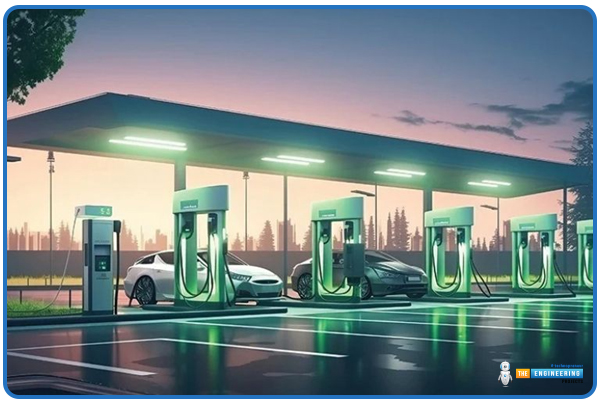
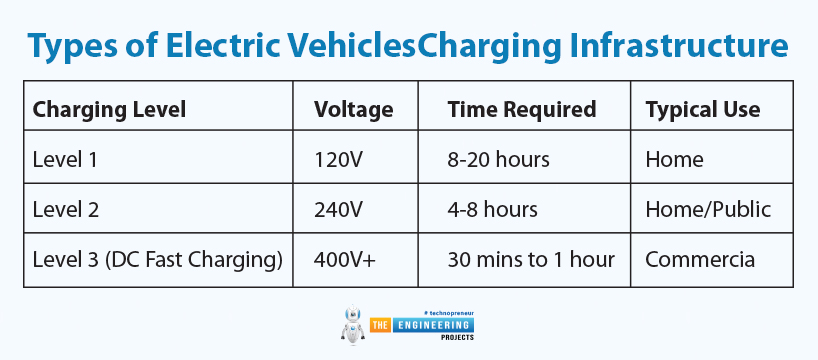
Charging Level |
Voltage |
Time Required |
Typical Use |
Level 1 |
120V |
8-20 hours |
Home |
Level 2 |
240V |
4-8 hours |
Home/Public |
Level 3 (DC Fast Charging) |
400V+ |
30 mins to 1 hour |
Commercial |
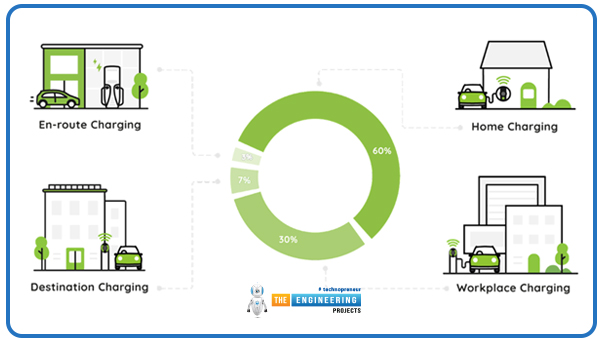
Advantages of Electric Vehicles:
Rather than ordinary gas or diesel cars, EVs are better in many different ways. EVs are better for the environment, cost less, and are much more comfortable to operate.
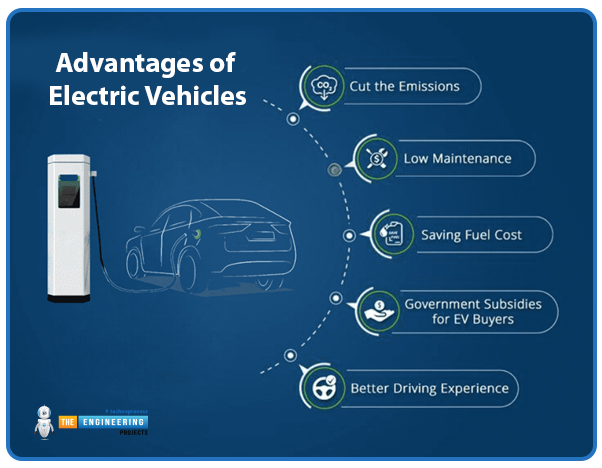
Environmentally Friendly:
Because there is no tailpipe, EVs have no air emissions when driving. Once again, this keeps the air cleaner and is also an advantage for cities. And if you charge your EV from solar, wind, or other clean energy, it helps reduce the disease rate and the levels of global warming since it doesn't create toxic gases like carbon dioxide.
Cost Savings In the Long Term:
It is normally cheaper to drive an EV rather than a fuel car. Electricity is cheaper than gasoline, and EVs have fewer moving parts and, therefore, less maintenance costs. For example, you are not getting oil changes, and you also will not have engine issues. In the long run, this can lead to substantial cost savings.
Smoother and Quieter Ride:
EVs will provide a fast and smooth drive. The beauty of an EV is that the motor provides power instantly; therefore, you do not need to wait for the engine to rev up or change gears, and there is no noise, providing a smoother experience for you, as well as reducing, in a smaller way, the impact of noise pollution on roads.
Reduced Dependence on Oil:
By using EVs, we lessen our reliance on imported oil and fossil fuels. Since our nation can produce electricity in several ways, it could mean we depend less on other countries for fuel, become more energy secure, and save money on our fuel needs.
Government Incentives:
Countries everywhere are providing benefits to encourage both consumers and businesses to use electric vehicles. There are incentives such as lower taxes, money back, reserved parking, no highway tolls, and free rides in HOV and carpool lanes. With these offers, it’s easier to own and drive electric vehicles.
Future Trends in Electric Vehicle Technology:
Within the next decade, the technology for electric vehicles will undergo developments previously not considered possible:

Solid-State Batteries:
Higher energy density
Faster charging rates & longer life span
Wireless Charging:
Convenient and easy charging with no bother of cables
Vehicle-to-Grid (V2G) Vehicles:
EVs could double as mobile grid storage
Autonomous Vehicles:
A combination of electrification and driverless technology
Sustainability in Manufacturing:
Less carbon footprint in electric vehicle manufacturing
Technology will incorporate recycled materials or green materials
Conclusion:
Electric vehicles (EVs) are far more than a trend; they're the future of transportation. Because they provide a cleaner, more efficient way of traveling, EVs help to reduce pollution and simply our dependence on fossil fuels as which is critical in protecting the environment. Better battery technology has greatly improved the consumer purchase price and capabilities of an EV, with improved driving ranges and charging times.
Although there are issues regarding the battery production problem (the costs) and the availability of charging stations, and there are ongoing efforts of innovation and investments in those issues, EVs are becoming the preferred transportation option globally.
More concisely, EVs are also propelling us to a cleaner, smarter, and more sustainable future, transforming the way we move, while equally protecting the planet and its people for generations to come.



